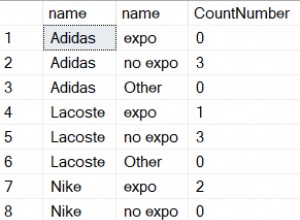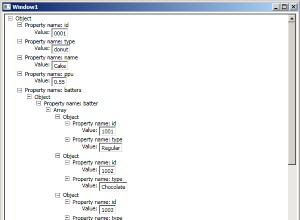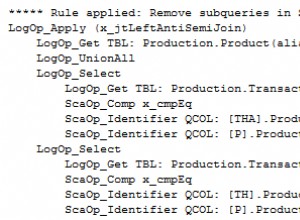No SQL Server 2005 ou mais recente, você pode usar este script:
-- drop PK constraint if it exists
IF EXISTS (SELECT * FROM sys.key_constraints WHERE type = 'PK' AND parent_object_id = OBJECT_ID('dbo.YourTable') AND Name = 'PK_YourTable')
ALTER TABLE dbo.YourTable
DROP CONSTRAINT PK_YourTable
GO
-- drop column if it already exists
IF EXISTS (SELECT * FROM sys.columns WHERE Name = 'RowId' AND object_id = OBJECT_ID('dbo.YourTable'))
ALTER TABLE dbo.YourTable DROP COLUMN RowId
GO
-- add new "RowId" column, make it IDENTITY (= auto-incrementing)
ALTER TABLE dbo.YourTable
ADD RowId INT IDENTITY(1,1)
GO
-- add new primary key constraint on new column
ALTER TABLE dbo.YourTable
ADD CONSTRAINT PK_YourTable
PRIMARY KEY CLUSTERED (RowId)
GO
Claro, este script ainda pode falhar, se outras tabelas estiverem referenciando este
dbo.YourTable usando restrições de chave estrangeira no RowId pré-existente coluna... Atualização: e claro , em qualquer lugar eu uso
dbo.YourTable ou PK_YourTable , você deve substituir esses espaços reservados pelo real nomes de tabela / restrição do seu próprio banco de dados (você não mencionou quais eram, na sua pergunta .....) 



